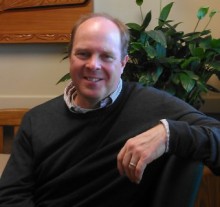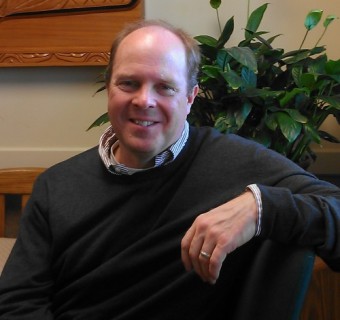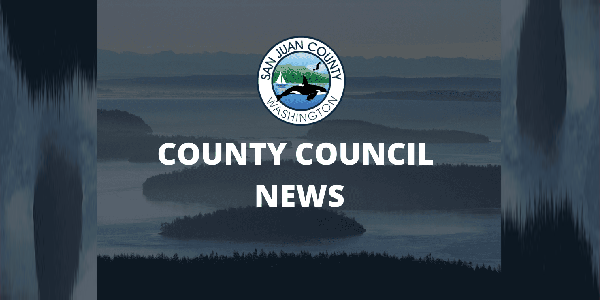— by Margie Doyle, updated March 2 at 4 p.m. —
Ferries and the Reservation System After several reservation schedule changes floated at public meetings last fall, Hughes says the state ferry system (WSF) now is considering the following changes:
- two-hour reservation cutoff instead of three hours on the Anacortes-SJ Islands route;
- charging full-fare for reservation no-shows;
- requiring reservation holders who are not at the toll booth at least 30 minutes before sailing time to transfer to standby status. (This proposal is opposed by the San Juan County Council).
Regarding the reservation system, Hughes says, “This is a process we’ve been in barely a year. There’s a need to manage reservations and standby a little better, yes, but the County approach is ‘don’t mess with a system that most people say works pretty well for them.”
County Council members will meet with ferries management for discussions before the spring schedule is issued. Hughes looks forward to this and similar meetings in order to sustain continuity with WSF administration. He credits that relationship, in particular with WSF Secretary Lynn Griffith and with Lynn Peterson, former head of the State Dept. of Transportation, for bringing about the funding for the Park and Ride lot to be built at Orcas Landing.
“We’ve had great communication and access [to WSF] and hope to build that up with the new management team,” that has replaced former top-level WSF administrators, says Hughes, who serves as County Liaison on the San Juans Ferry Advisory Committee. “We’re not designed to be combative but to be the conduit of the County to WSF for transportation services to commercial businesses, local residents and visitors to the islands.
Since a hole in its hull was found in February, the new ferry Samish has been in drydock. Hughes said the effect was a “slight capacity reduction.”
Shoreline Master Plan
County work has recently focused on updated the Shoreline Master Plan (SMP), a process that has now taken seven years. The Council has devoted much time in January and February and project that they will be voting on approving the update as an ordinance later in March. Hughes says, “We haven’t considered dramatic changes but have made it [the SMP] to better reflect county interests now:”
- provide access to marine transportation;
- protect the natural environment, including prohibition of pipelines and prohibitions on GMO-modified organisms in line with the county ban on GMO food production;
- provide for long-term marine use of existing facilities;
- provide shoreline access;
- remove non-conforming uses in the shoreline;
- consider installation of buoys as marine opportunities.
Hughes notes that there is money in the county budget for mooring buoys, and would like to pose the question to the community if they would like to have 5-10 public access buoys near the County Dock in Eastsound. He looks forward to public meetings to discuss this proposition.
Hughes says, “As a whole, the SMP update is more restrictive on a county-wide basis, but in individual situations it is more flexible. We may not have made as many changes as some would like, but we’ve made a good balanced attempt to provide site-specific accommodation for
- individual property rights;
- public access;
- environmental protections.”
Eastsound Subarea Plan (ESAP)
The updated ESAP was passed by the County Council in December 2015, with the understanding that several elements were still in development, such as a parking plan, the “Transportation Hub” between North Beach Road and Prune Alley, and kiosks.
In approving the ESAP, the Council accepted the Eastsound Planning Review Committee’s (EPRC) recommendation that the Port-owned property split zoning at the corner of Mt. Baker Road and North Beach Road be retained; now the Port has proposed a land use compromise of the property that comports with Federal Aviation Administration requirements and with the community’s comfort with conserving the rural character of Eastsound.
Hughes says the ESAP is “relatively fluid in land planning, so let’s move on to improve it on a consistent basis.” In a related concern, Hughes says, “I’d like to get the Deer Harbor Plan Update passed and approved.” He cites the work done on the trail network in that neighborhood, and says, “I’m always willing to consider everything — it just has to be put into the work plan.
“There will be opportunities to change community plans such as Eastsound and Deer Harbor in the next 2-3 years when the Growth Management Act (GMA) is updated.”
Broadband internet expansion
Hughes says that the County Planning Department will be able to issue permits more quickly thanks to the LEAN process in which county staff were trained last year. Installing broadband “is important for long-term access to consistent high-speed access with the least environmental impact. I support anyone who’s out there working together to provide internet access.”
Regarding Rock Island’s partnership with T-Mobile, says Hughes, “The joint-use wireless facilities makes it easier to lay in technology. It could transform the county in how we do business. [County Departments such as] Planning and Public Works and new businesses would all benefit.”
Lighting in Eastsound
With OPALCO/Rock Island plans to install fiber optics for internet expansion, crews are working to locate conduit that was installed 20 years ago on Main Street from the “West Gate” at Washington Federal Bank to the hill crest east of Haven Street; and on North Beach Road to the Prune Alley – North Beach intersection. New conduit will be installed on Prune Alley as streetscape improvements are excavated.
Hughes notes that this conduit provides the “infrastructure so that later on, decisions can be made for lighting.” As for the form that lighting may take, “We’re waiting for the community to tell the county what to do. It doesn’t mean we’re going to stick streetlight poles up, but I think it makes sense over time to have base lighting. I’m more than willing to be a part of figuring out how we get less light glare, and more of an ambiance that doesn’t affect vision or our rural character.” He mentions path lighting less than two-feet high that doesn’t affect the county’s “dark skies” policy.
“The intent is to provide the ability to walk up and down Main Street and North Beach Road and not trip, just so people can find a way through town.”
Hughes will report to the Eastsound Planning Review Committee this Thursday, March 3. The meeting of the county advisory committee begins at 3 and concludes at 5 p.m.
**If you are reading theOrcasonian for free, thank your fellow islanders. If you would like to support theOrcasonian CLICK HERE to set your modestly-priced, voluntary subscription. Otherwise, no worries; we’re happy to share with you.**










Thanks and appreciation for all your hard work and positive efforts Rick!
go Rick
Thank you, Rick, for communicating directly with the members of the community on the many issues and projects of importance to us all !!
I look forward to a regular “News from Hughes” as we move forward; perhaps monthly, or every six weeks??
Margie, thank you for continuing to cover matters of community importance.
I might suggest that an additional level of detail on Rick’s comments would be helpful as it is unclear how the SMP delay, the ferry reservation system, mooring buoys and the various subarea plans impact the people. Does the present SMP allow for pipelines? I thought it did not based on Councilman Stephen’s comments at the last town-hall. How does the SMP impact GMO? Does the new SMP prohibit importing genetically modified materials (GMO) from Canada? When you remove non-compliant shoreline properties are you asking them to tear down their houses? I have no idea as to how additional mooring buoys in Eastsound would help me? What will the Deer Harbor Subarea plan do for me? Why is the SMP delay a good thing?
I believe the ferry capacity reduction was significant enough to attract the attention of the Seattle media, let alone ours. So now might I give up a $40 ticket on my “WavetoGo” if I miss my ferry? Wow, while that seems unfair, is this accurate?
Lastly the county will not review and update the Growth Management Act (GMA, a State law) in the next 2-3 years. Rather it will update the county comprehensive plan, something required to remain compliant with the GMA. Maybe a nuance to many, however this difference should be of critical importance to your readers. The comprehensive plan is the “bible of county planning” and is critical to all of us.
I feel the way this article is written makes it unclear as to what is actually occurring and how it impacts all of our county residents.
Thanks again for all you do. Don’t get me wrong, I am very happy to be a supporter of Orcas Issues. Your reporting is critical to our community and I appreciate all you do.
Thanks Greg for your questions. As most of these topics have been covered in Orcas Issues, I’ll try to answer each of them by linking to a previous article. Any reader can do this by searching for the topic, such as SMP, in the search bar, but I’ll be glad to do it myself later this afternoon. Also, I removed some of your postscripts that seemed to be addressed privately to me. Thanks for adding your perspective, Greg. Margie Doyle
Thanks to Rick and Orcas Issues for keeping us updated. I would like to know why “prohibitions on GMO-modified organisms in line with the county ban on GMO food production” is included in the SMP. What’s the connection? Isn’t this already covered by the county ban? Please don’t bloat the document with unnecessary add-ons.
I personally love the “News from Hughes” format. And I very much appreciate the fact that Rick did NOT go into great detail about the different topics.
With this format people get a brief description of what is going on and can pursue the topics they want to pursue without having to read the whole “book”. Not all of us have the time(or the desire)to know all the details about everything in one sitting. Most of us are quite capable of getting answers to any questions we may have. And both Rick and Margie are wonderful with their timely answers when someone asks.
Keeping “News from Hughes” brief will encourage more folks to read all of it instead of just parts of it and therefore be better informed citizens. Which I strongly suspect was the whole idea in the first place.
Thanks for all you have done, are doing and will continue to do for the folks of Orcas Island!